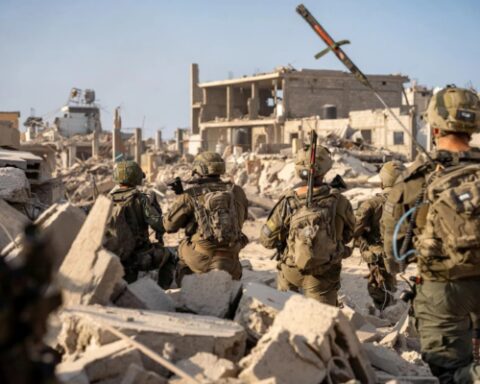Global food insecurity experts are now reportedly sounding the alarm over what they describe as famine-like conditions in the Gaza Strip, citing widespread malnutrition and extreme hunger.
In a new interim report, the Integrated Food Security Phase Classification (IPC), a United Nations-affiliated body, declared that “the worst-case scenario of famine is currently playing out in the Gaza Strip.”
While the IPC’s findings are not an official famine declaration, their stark language reflects the toll of an increasingly complex conflict between Israel and Hamas, one that has left humanitarian conditions in Gaza under intense scrutiny.
As of July, the IPC reports that 86% of Gazan households say they regularly go without food, with many reportedly scavenging from garbage to survive. More than 20,000 children have been treated for acute malnutrition since April, according to the report.
Despite the grim figures, Israeli officials pushed back, emphasizing that the crisis cannot be pinned solely on the Israeli government and noting that they are acting within the bounds of international law. “This is a lie,” said Israeli Foreign Minister Gideon Sa’ar, dismissing allegations that Israel is intentionally withholding aid.
Israeli Prime Minister Benjamin Netanyahu echoed this stance earlier in the week, stating unequivocally: “There is no policy of starvation in Gaza, and there is no starvation in Gaza.”
Israel insists its blockade and restrictions are meant to target Hamas, the Iran-backed terror group that launched a brutal surprise assault on Israel on October 7, 2023, triggering the ongoing war.
In response to international pressure and worsening conditions, Israel has taken recent steps to ease humanitarian strain, announcing pauses in military operations in certain areas and reopening humanitarian corridors to facilitate aid.
It has also resumed airdrops of supplies in cooperation with Jordan and the UAE and agreed to a temporary scale-up in aid shipments through Egypt, including the easing of customs barriers on food and medicine.
Still, these efforts face major challenges. The Gaza Humanitarian Foundation, an alternative aid distribution network supported by the U.S., has struggled to operate effectively, with aid seekers forced to risk crossing combat zones, often under fire. Critics argue the system lacks the capacity and stability needed to meet demand.
On the ground, hunger remains dire.
Even President Donald Trump weighed in, noting the severity of the images emerging from the region. “Some of those kids—that’s real starvation stuff, I see it. You can’t fake that,” he said, pledging support for direct food delivery alongside European partners.
While humanitarian organizations and the media often point fingers at Israel, little attention is paid to Hamas’s role in perpetuating suffering, including reportedly hoarding aid, weaponizing civilian infrastructure, and rejecting cease-fire terms.
As aid continues to trickle in and diplomatic efforts intensify, the people of Gaza remain caught in a tragic crossfire—one that underscores the cost of conflict and the failure of Hamas to prioritize its own population’s welfare.
[READ MORE: Trump Breaks With Netanyahu Over Gaza Famine]








